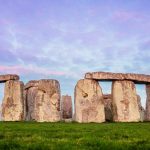Pyramids
Pyramids are amazing structures, and they are found all over the world. The most famous pyramids are those located in Egypt. People flock to Egypt every year to see the Great Pyramid of Giza. Pyramids are manmade structures, and they don’t occur on their own. How people built these pyramids is a mystery, but we do know that they constructed by humans. There is a pyramid that we all thought was a pyramid, but it turns out we were wrong. 4, 600-Year-Old Greek ‘Pyramid’ Found in the Aegean Sea … Is Not a Pyramid at All. This information shocked both the scientific community and the archaeological community. for years, people believed this to be a pyramid, but it isn’t.
“Pyramid” In the Greek Islands
There is a “pyramid” in the Greek Islands in the Aegean Sea, and as it turns out, it isn’t a pyramid at all. The photos have made their rounds online, but scholars are now saying that it isn’t a pyramid. Pyramids are manmade, and this is an island. It may be tiny, but it is actually an island. Scholars have been excavating the site, which helped them learn a lot about what they are calling a pyramid island.
Interesting Discoveries
While the excavation that took place on the island helped the experts discover early on that the pyramid wasn’t a pyramid at all, it did bring about some pretty impressive finds. The island called Dhaskalio, and it is located about 295 feet west of the island of Keros. About 4,600 years ago, the sea level was much lower. During this time, researchers believe that the pyramid island was part of Keros. As the sea level got higher, the lower elevations of the island were covered with water. Over time, the rise in the sea level created two separate islands. This left Dhaskalio an island in its own right.
Natural Pyramid Shape
While the island has a natural pyramid shape, the ancient people who inhabited the area made some changes of their own. They built a series of walls on the island. Experts believe that they weren’t trying to make the island look more like a pyramid when they were building the walls. Instead, they were building up the walls for protection. The way the walls were constructed and the placement of the walls made the island look more like a pyramid. This is why people have been led to believe that it is a pyramid and not an island.
Michael Boyd
One of the researchers on the island was Michael Boyd, who is a senior research associate at the McDonald Institute for Archaeological Research at the University of Cambridge. He is also the co-director of excavations at the site. He and his team headed to the site and began the excavation, and he discovered some pretty amazing things.
Amazing Discoveries
When Michael and his team began excavating the island, they discovered a series of buildings, stairways, and walls. They even found a drainage system, which was evidence of a sophisticated urban settlement. Many of the structures were made of marble, which is believed to have been imported from an island called Naxos, which was located about six miles away.
Evidence of Tools and Weapons
Michael and his team discovered a number of casts that were used to create metal tools. They found what they believe to be remains of chisels, axes, spearheads, and daggers. They also discovered copper slag from smelting on potsherds. These artifacts had been sitting on the island for centuries just waiting to be found.
Broken Objects
There was one thing that caused Michael and his team to have questions. On the island, they found broken sculptures and figurines that had people with crossed arms. These figures wouldn’t have made them curious; however, they were smashed, and it looked like it was intentional. The team wanted to find out more about this figurine breaking ritual.
Long Since Abandoned
The island has been abandoned for centuries. According to Michael and his team, it had been used for 400 years before becoming abandoned. What they don’t know is who actually lived there, and why did they leave?
Uncovering the Mystery
While Michael and his team may not have given up on finding the answers to the island, and what happened there, they haven’t given up. He says that somewhere on the island, there are answers to his questions. All he needs to do is keep searching, keep excavating, and eventually, he will find the answers to all of his questions. This isn’t the only ancient mystery surrounding our past. There are archaeologists all over the planet who are trying to uncover secrets of the past.


